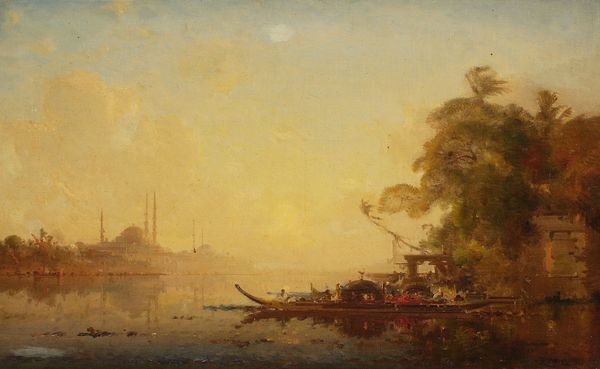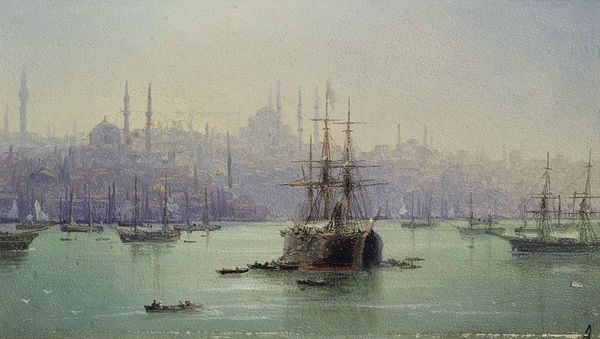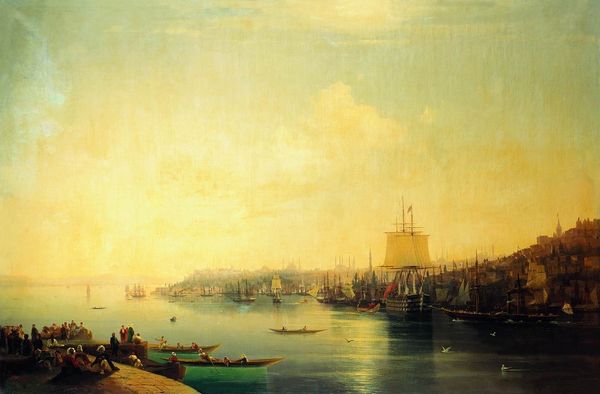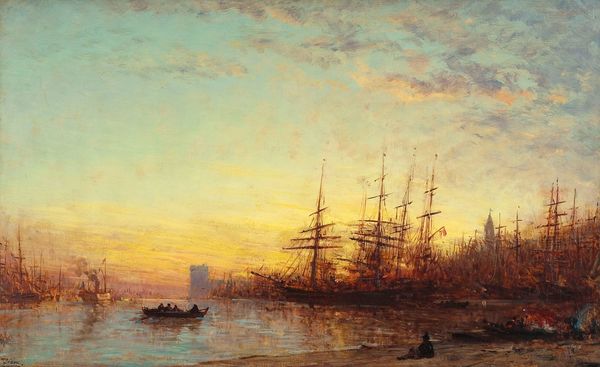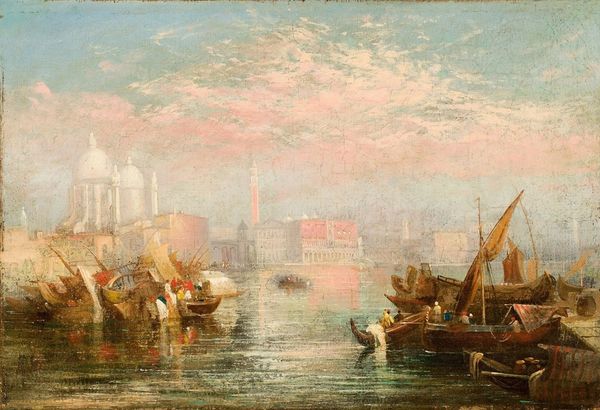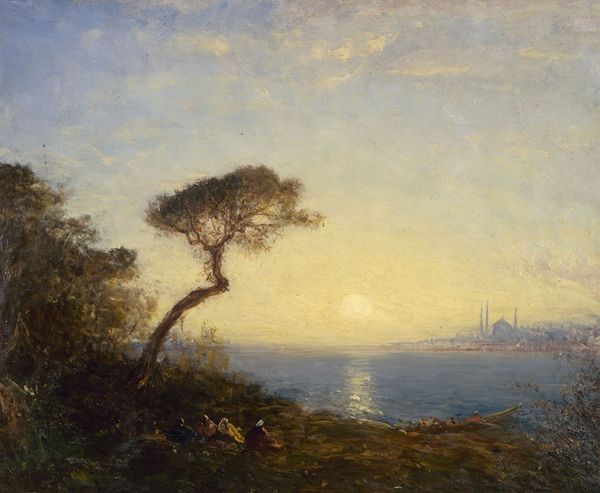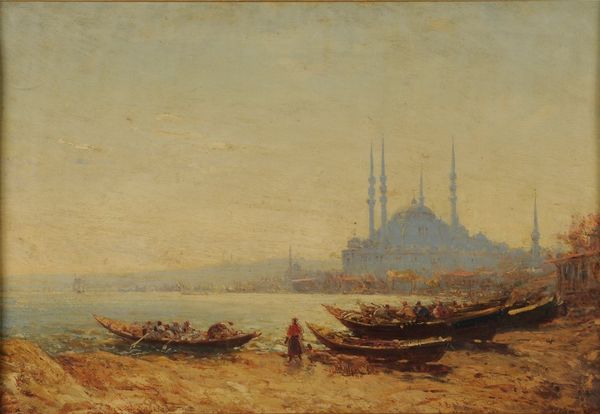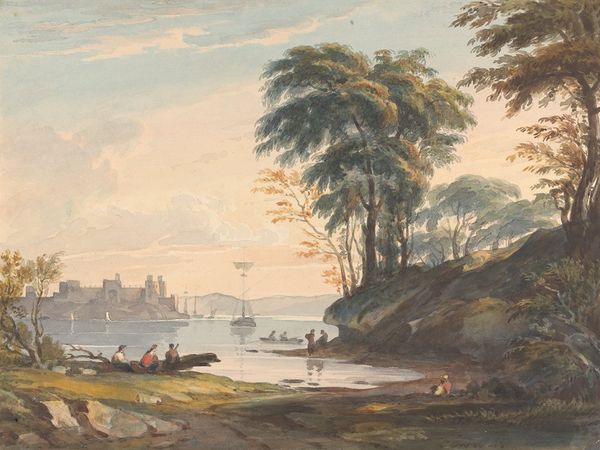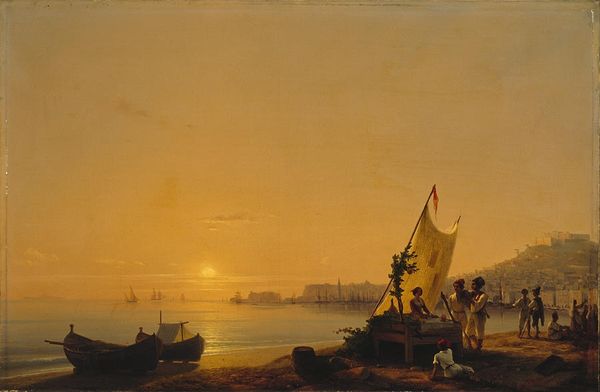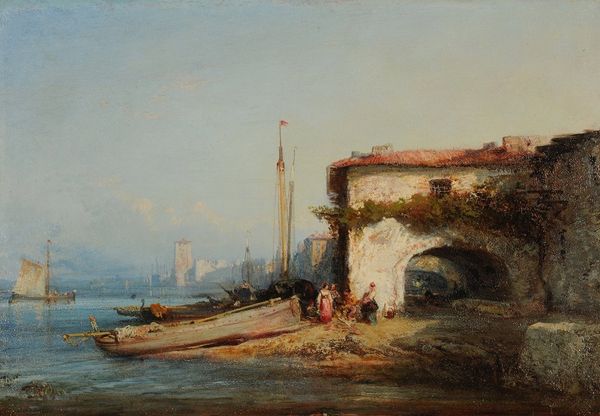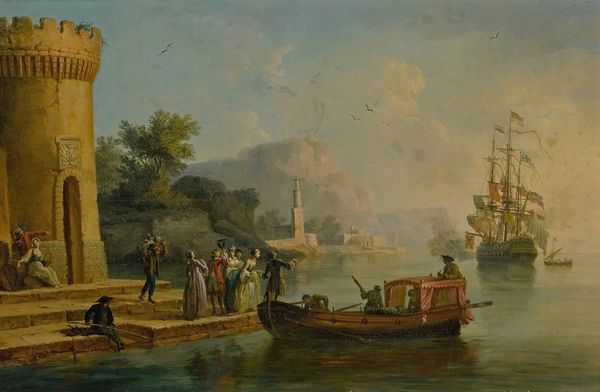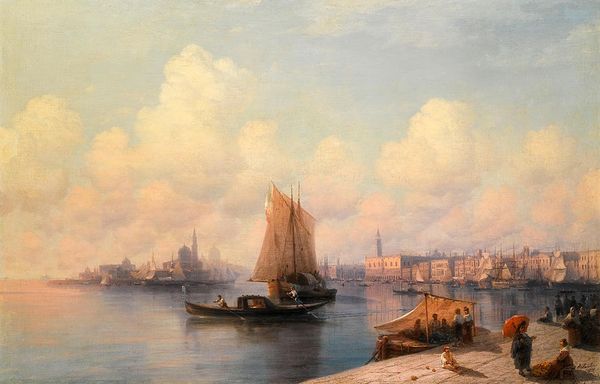
painting, oil-paint
#
baroque
#
painting
#
impressionist painting style
#
oil-paint
#
landscape
#
impressionist landscape
#
orientalism
#
cityscape
Copyright: Public Domain: Artvee
Curator: Let's turn our attention to this tranquil cityscape by Félix Ziem. The work is entitled "Caicos in front of Saint Sophia," and it's rendered in oil paint, typical of the artist's style. Editor: My immediate sense is one of dreamy nostalgia. The soft light bathing the scene, the almost ethereal quality of the buildings in the distance—it feels like a memory more than a depiction. There’s a certain haze that softens the lines, like looking through time. Curator: Absolutely. Ziem was very much part of the Orientalist movement, where artists depicted the "exotic" Middle East. In this piece, Hagia Sophia—or Saint Sophia as it was known—becomes an evocative symbol, a cultural and religious touchstone imbued with centuries of historical and spiritual significance. Editor: And the very act of representing it this way—through a European lens, bathed in a romantic glow—is crucial. It reflects the power dynamics of the time. Who is looking, and what are they seeing or choosing to see? How does it relate to power, conquest, and gendered assumptions? Curator: Precisely! The details are fascinating here. Look at the boats gently bobbing in the water, figures inhabiting the space, yet almost dissolving in light. He captured an almost dream-like representation of Constantinople, focusing on light and mood. These details serve as emotional anchors that transport us to this place and time. I wonder, though, about that lone, small flag fluttering in the wind, its colors seemingly bleached by the sunlight. Is that intentional, or incidental? Editor: Perhaps. The flag, no matter its symbolism or its subdued color, becomes another layer of narrative and representation, inevitably framed by colonial history and cultural projection. We have to remember that, no matter the painter’s intention, the canvas is a site of layered interpretations. We may see beauty and history but we must also consider power and its legacies in art. Curator: Indeed. Art becomes a potent lens through which we view ourselves, history, and the complexities of cultural interaction. Editor: It’s a useful reminder that images, however serene, are always deeply intertwined with the world they depict and the contexts that shaped their creation.
Comments
No comments
Be the first to comment and join the conversation on the ultimate creative platform.
